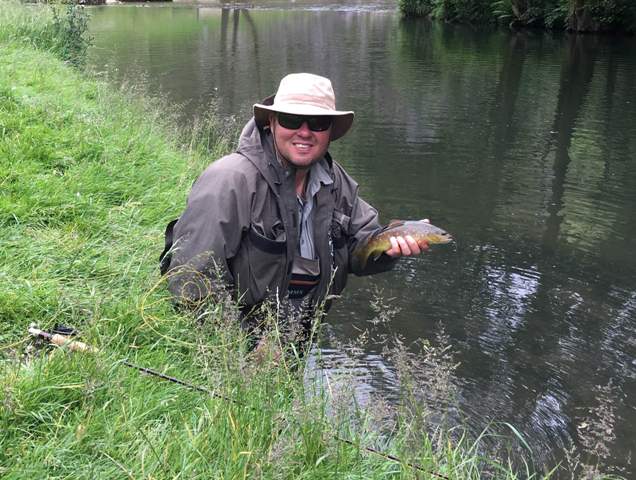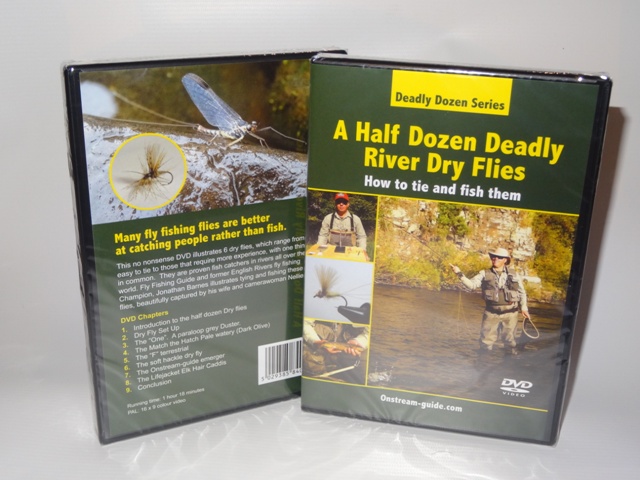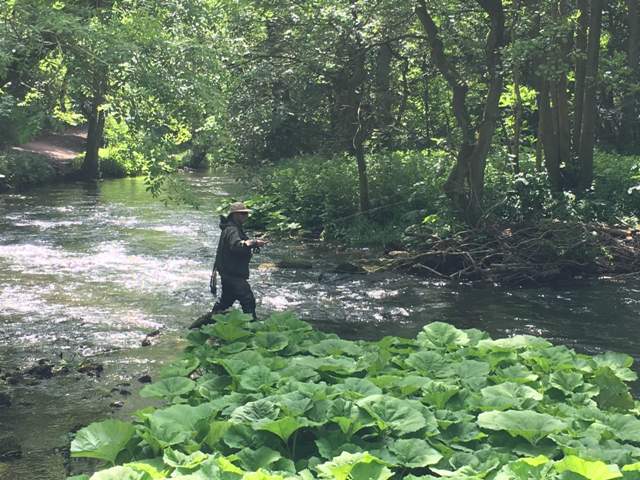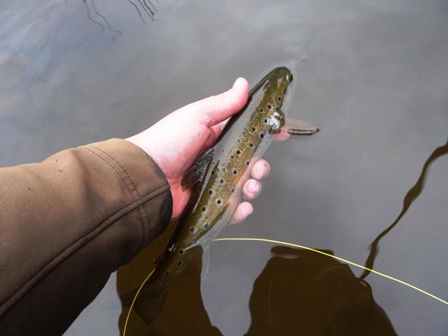| Back to Back Issues Page |
 |
|
Small Streams July 04, 2016 |
Small streams
Limestone caves on the DoveRiver fly fishing can take us to spectacular areas of natural beauty and this is epitomised by small streams particularly those like the River Dove in the Peak District. This historical trout stream featured in Izaak Walton’s The Compleat Angler and with Charles Cotton they built a fishing cabin in 1671 that stands to this day. The river itself has carved a magnificent gorge through limestone creating a verdant valley and a trout stream with great variation. Thanks to Leak and District Angling club I recently fulfilled a lifelong ambition and had an opportunity to cast a fly or two on this hallowed water. There are however thousands of more typical streams often tackled by river fly fishers.
A trout caught in the"flats" on the DoveFishing small streams can be difficult particularly when water levels are low and fish are gorged on the previous months Mayfly hatch. Nevertheless by employing upstream tactics including the duo and dry fly we were able to catch stunningly marked wild trout and gracious and pretty grayling. A good rule of thumb when fishing small streams in low conditions is to find the faster deeper sections. Fish don’t always read rule books though and there are always trout mulling around in featureless flats. These fish are the hardest for any angler to target. They have all the time in the world to inspect a fly and there is no immediate need to take a fly as in a fast rifle. The fly fisher has to get the fly on the fish in the first place which on flats can be more than tricky. A splashy cast or other disturbance results in quick failure. If you can catch fish on the flats on the stream you can get them anywhere. To reduce splashy casts try using a double taper floating line in conjunction with a furled leader. The lighter the better (a 3 weight is ideal for wild trout streams in the UK). The “one” a fly featured in our dry fly DVD is a must for tricky rising fish in flats. This fly sits low in the surface film and does a great job of imitating everything from a stuck emerger to a spent spinner. It has taken many “educated” or difficult trout.
Fishing upstream on small streamsA good tip for fishing streams is, if you are a right hander is to become a lefty and vice versa. The upshot of this is the back cast can be kept clear of bank side vegetation and aimed over the stream itself. There are 3 ways of casting as a lefty/righty (delete as appropriate). The first and most difficult is to become ambidextrous and cast with your non casting arm (in ordinary circumstances). This is frustrating but can be achieved with many years of practice and is just not practical for the average fly fisher. The second is to reverse the cast. So face downstream and the forward cast becomes the “back cast” and the fly is delivered blind on the back cast. This works because a fly cast should have an element of symmetry about it. This is a good technique if the back cast is really tight or constrained. It is however difficult to get the fly exactly in the right place. In my opinion and experience the best method is to cast is with a stroke across your chest. The basic cast is achieved with a relatively short stroke. An advantage of casting across your chest with the rod tilted at about 45 degrees is that common casting faults are eliminated. There simply isn’t the room or physical ability to cock the wrist backwards (the cause of wide loops, tailing loops etc). The disadvantage is that hauling is less effective and therefore long distance casts are difficult or impossible. But for many stream situations accuracy is far more a priority than distance and this method works. Yes it takes practice but nowhere near the amount that it requires to become ambidextrous.
|
| Back to Back Issues Page |




